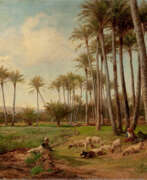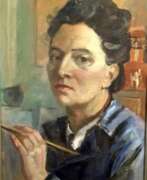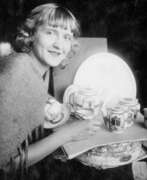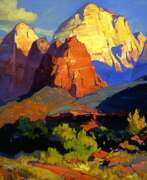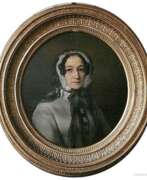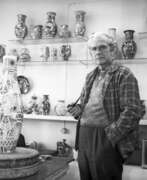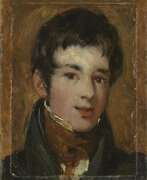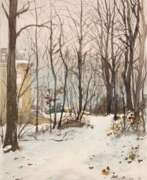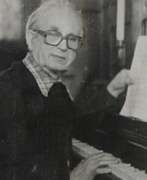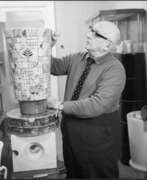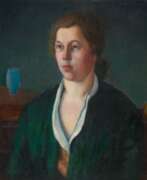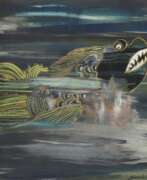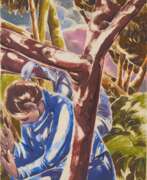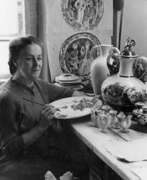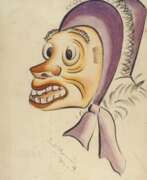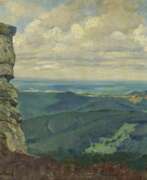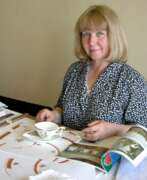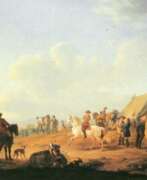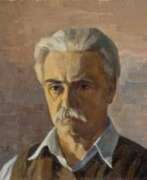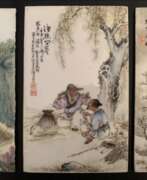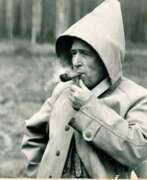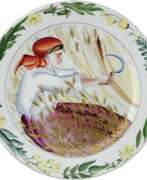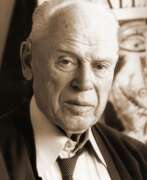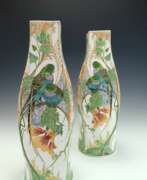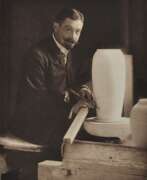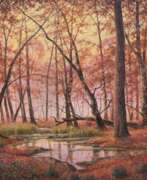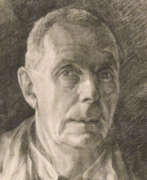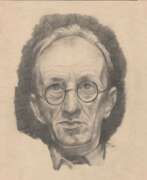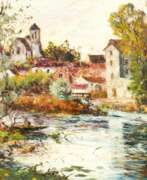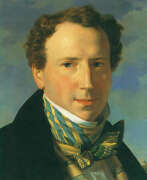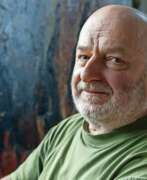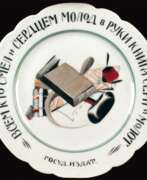Porcelain painters Landscape painting
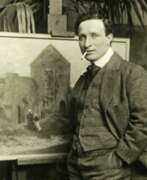

Charles Garabed Atamian is a French artist of Armenian origin born in Turkey.
He studied for a time at the Academy of Fine Arts in Venice, then worked as chief designer at a porcelain factory in Istanbul. In 1894, Atamian worked with a team of artists to decorate the new palace of Sultan Abdul-Hamid Il in Yildiz, on the European side of the Bosphorus. He designed, among other things, the patterns for the ceramic tiles of the palace walls.
In 1897, Atamian emigrated to France and began illustrating books and magazines, as well as working on sets for several Parisian theaters. Since 1903 Atamian participated in various exhibitions with unquestionable success. He painted landscapes, sea and beach scenes with children (including some 200 paintings at Saint-Gilles in the Vendée, where he resided each year during the summer months from 1923 to 1939). Throughout his career he was a fine portrait painter. He became a member of the National Society of Artists in 1927.
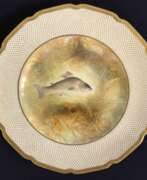

Joseph Birbeck I was a renowned English ceramic painter born in 1862. He was known for his exquisite work on bone china and porcelain, especially with designs that feature intricate fish, game birds, and landscapes. Birbeck's career highlights include his contributions to Royal Doulton and other renowned potteries in Staffordshire, England.
His artistry is well-regarded, with various hand-painted works sold at auction and featured in private collections. Some of his notable pieces include Royal Doulton bone china fish plates made for Tiffany & Co., New York, often hand-painted with intricate fish designs and signed "J. Birbeck, Sen."
Several works by Birbeck are highly valued by collectors and are found in prestigious auction houses and antiques marketplaces. If you're interested in collecting his works or learning more about them, you can find a range of his pieces, such as ornithological cabinet plates and decorative vases, at various auctions and antique dealers.
For those interested in exploring the art and history of Joseph Birbeck I, there are numerous platforms where you can track his pieces and find upcoming sales. Consider signing up for updates on upcoming sales and auction events focused on Birbeck's art. This subscription will keep you informed about new product releases, exclusive collectible items, and related news in the field of art and antiques.
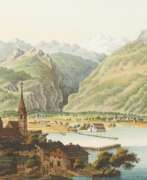

Johann Heinrich Bleuler the Elder was a Swiss landscape painter and engraver.
Bleuler the Elder first trained as a porcelain painter at the Kilchberg-Schooren porcelain manufactory near Zurich. In the early 1780s he settled in Feuertalen and became the founder of the dynasty of artists that is known as the "Bleulerische Malschule". His two sons, Johann Heinrich Bleuler the Younger (1787-1857) and Johann Ludwig Bleuler (1792-1850), also became artists and continued their father's work. And in total, there were up to 25 artists in the dynasty, including godchildren and other relatives.
Bleuler the Elder created mainly landscapes of the Rhine, painted in gouache and watercolor, panoramic views of Swiss cities. He also worked as an art teacher.
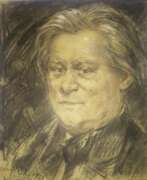

Louis-Alexandre Cabié was a French landscape painter.
He was inspired by charming views of the French provinces. He painted many landscapes of the Charente near Cognac, the banks of the Gironde, Royan, and the cliffs of Saint-Georges-de-Didon, as well as on the banks of the Weser. Cabié also painted his landscapes on vases at the Vieillard ceramics factory in Bordeaux.
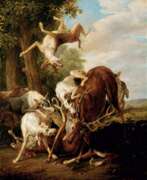

Jean-Charles Develly is a French designer and artist. He is particularly famous for his paintings on porcelain while working at the Sèvres factory. Jean-Charles Develly worked at the Porcelain Manufactory in Sevres from September 1813 to 1847 and became one of the most famous artists of this establishment.
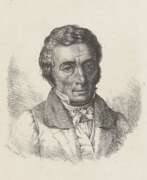

Frédéric Théodore Faber was a Belgian landscape and genre painter. He established at Brussels a china manufactory, and abandoned painting on canvas for painting on porcelain. He also etched upwards of a hundred plates of landscapes and animals, some after his own designs.
A significant set of pieces painted by this virtuoso is exhibited at the Museum of Decorative Arts François Duesberg.
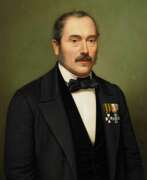

Jean-Baptiste Fresez was a German painter of French origin.
He began his studies at the Luxembourg School of Drawing and then continued at the Royal Academy in Brussels and obtained Luxembourg citizenship. Fresez worked as an engraver and painter at the Villeroy and Boch porcelain factory in Mettlach on the Saar River, and from 1824 he successfully taught at the Luxembourg Drawing School.
Fresez produced beautiful landscapes and very lively portraits. These are mainly of members of the Grand Ducal family and other well-known local personalities. A collection of 30 lithographs was published based on his landscape drawings, which today are considered very valuable in documentary terms, and each of them has a detailed description. Fresez's landscapes are characterized by their almost photographic depictions of the city of Luxembourg. After the publication of this work, he was elected a member of the Archaeological Society of the Grand Duchy.
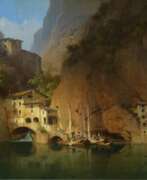

Carl Friedrich Heinzmann was a German landscape painter, porcelain artist, lithographer, and printmaker. He worked for the Nymphenburg Porcelain Manufactory and mostly painted serene and peaceful landscapes. Heinzmann also left lithographs and oil paintings, many of which describe war scenes.
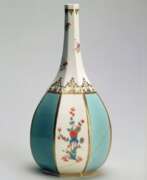

Johann Gregor Höroldt was a German porcelain artist who developed the Meissen porcelain style. Höroldt was trained as a miniature and enamel painter.
Between 1719 and 1720 he worked at the porcelain manufactory in Vienna, recently founded by Du Pacquier, and then moved to Meissen and began his collaboration with the Meissen Porcelain Manufactory. In 1724 he was appointed court painter. In 1731, Höroldt became an arcanist (a chemist, a key figure in porcelain production), and was simultaneously appointed head of the entire painting department and court commissioner.
Höroldt influenced virtually all European porcelain and faience manufactories. He specialized in the fashionable and popular chinoiserie design, but also introduced European landscapes, harbor and battle scenes, still lifes, and bird images as porcelain decoration.
The artist also significantly expanded the palette of colors used in Meissen: in the early XVIII century. was available only five paints for glaze, and Höroldt by 1731 increased the palette to 16 colors. He attached great importance and the original form for porcelain, trying to make it different from the usual dishes.
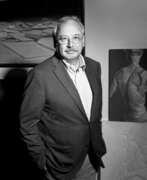

Reinhard Minkewitz is a German graphic artist and draftsman.
He graduated from the Academy of Fine Arts in Leipzig, lives and works in this city.
The figurative artist Minkewitz works on large format paintings, in addition he creates sculptures, ceramics, art prints and also collaborates with the Meissen porcelain manufactory.
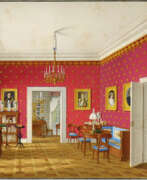

Franz Xaver Nachtmann was a German painter.
He studied at the Academy of Fine Arts in Munich, then worked as a floral artist at the Nymphenburg porcelain factory. A versatile artist, from 1827 Nachtmann switched to landscapes, interior, palace and architectural painting, and also painted portraits and genre scenes.
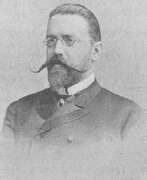

Vasily Pavlovich Schreiber (Russian: Василий Павлович Шрейбер) was a Russian artist of the late 19th and early 20th centuries of Baltic-German origin. He is known as a painter and graphic artist, decorator, master of porcelain painting and teacher.
Vasily Schreiber was engaged in decorative painting - the creation of plafons and decorative panels in private homes in St. Petersburg, Moscow, Samara and in churches. He also painted landscapes and genre pictures, and worked a lot in watercolor technique. The artist worked for several years in Italy and traveled to France.
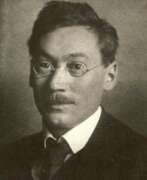

Rudolf Sieck was a German landscape painter and illustrator.
He studied at the Munich School of Applied Arts, making landscape and architectural drawings. Sieck collaborated with the magazine "Jugend", and also illustrated editions of works by Guy de Maupassant, Emile Zola and other classics. In 1906 Rudolf Sieck worked as a designer for the Nymphenburg porcelain factory, and in 1913 he moved to Pinswang near Prin and became a member of the Die Welle artists' association. Here numerous landscape paintings were created, mostly in a colorful graphic style.
Rudolf Sieck was a member of the Association of German Artists, a member of the New Munich Secession from 1914 and participated in the exhibitions of the Glass Palace. From 1937 to 1941, some of Sieck's landscape paintings were purchased by the highest members of the German government at art exhibitions in Munich.
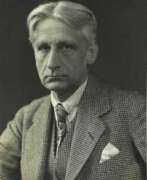

Harald Slott-Möller (Danish: Harald Slott-Møller) or Georg Harald Slott-Möller was a Danish symbolist painter.
He received his artistic education at the Royal Danish Academy of Fine Arts. As an adherent of the symbolist direction of painting in Denmark, together with his wife Agnes Slott-Möller, he participated in the creation of the Free Style group. Harald was also a master painter of porcelain and earthenware and worked as a designer at the earthenware factory Aluminia.
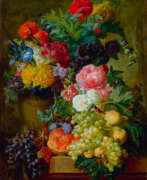

Georgius Jacobus Johannes van Os was a 19th-century painter from the Northern Netherlands. He was a son and pupil of the painters Jan van Os and Susanna de la Croix, and a brother of the painters Pieter van Os and Maria Margaretha van Os. In 1809 he won the first prize of the Society Felix Meritis in Amsterdam for a still life in which genre he later specialized. In 1822 he moved to Paris, where he worked for the Sèvres porcelain factory. He painted landscapes, but was, like his father, best known as a painter of flowers. Starting in the 1830s he spent his summers in Haarlem, where he continued working on flower illustrations for the "Flora Batava" edited by Jan Kops. He is not to be confused with the son of his brother Pieter, also a painter called Georgius Jacobus Johannes van Os, but who lived from 1805-1841 and continued the family painting tradition.
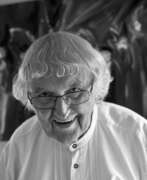

Heinz Werner was a German painter, graphic artist and porcelain artist. He lived and worked in Coswig and Meissen in Saxony.
Together with Ludwig Zepner and Peter Strang, he founded the Collective Artistic Development Department of the Meissen Manufactory.
Heinz Werner designed around 100 modern Meissen décors, including such popular ones as 1001 Nights, Midsummer Night's Dream, Blue Orchid on Branch and Hunter's Latin. Heinz Werner also created numerous unique pieces for the Meissen manufactory. There are several murals made of Meissen porcelain by the artist on and in public buildings. He mastered all artistic techniques. In addition to working with porcelain as a material, he especially cultivated watercolour, chalk and painting with oil and acrylic paints.
